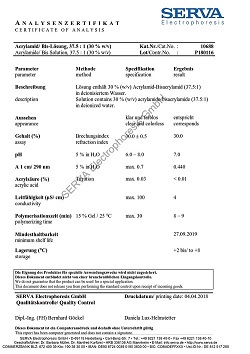Western Blotting
For analysis, proteins are usually separated by polyacrylamide gel electrophoresis. Another characterization method is the subsequent Western Blot followed by immuno detection. For this, proteins are blotted onto a membrane by electro transfer. The transfer can be done either by semi-dry or tank blotting.

Semi-dry Blotting
- Usually performed with a discontinuous buffer system
- For efficient and fast protein transfer (within 15 min): SERVA Xpress blotting with a special buffer system and blotting fleeces
- Allows even transfer of large and small proteins
Tank Blotting
- Usually performed with Towbin buffer
- Small proteins are transferred faster than big ones
Both, nitrocellulose (NC) and PVDF membranes can be used as transfer membranes.
Nitrocellulose (NC) – Often used for routine applications
- Binding capacity: 80 - 120 mg/cm2
- Low background
- „Fragile“ if not supported
- Protein binding depends on the methanol concentration
- For proteins, DNA, RNA
PVDF – Superior transfer results compared to NC due to higher binding capacity
- Binding capacity: 125 - 250 mg/cm2
- Hydrophobic
- Mechanically stable
- For proteins
Detection of membrane-bound proteins is usually carried out with horseradish peroxidase (HRP) or alkaline phosphatase (AP) -labelled antibodies.
Then, antigen-bound antibodies are detected by a chemical reaction of the enzyme with the respective substrate which produces a chemiluminescent or colorimetric signal.






